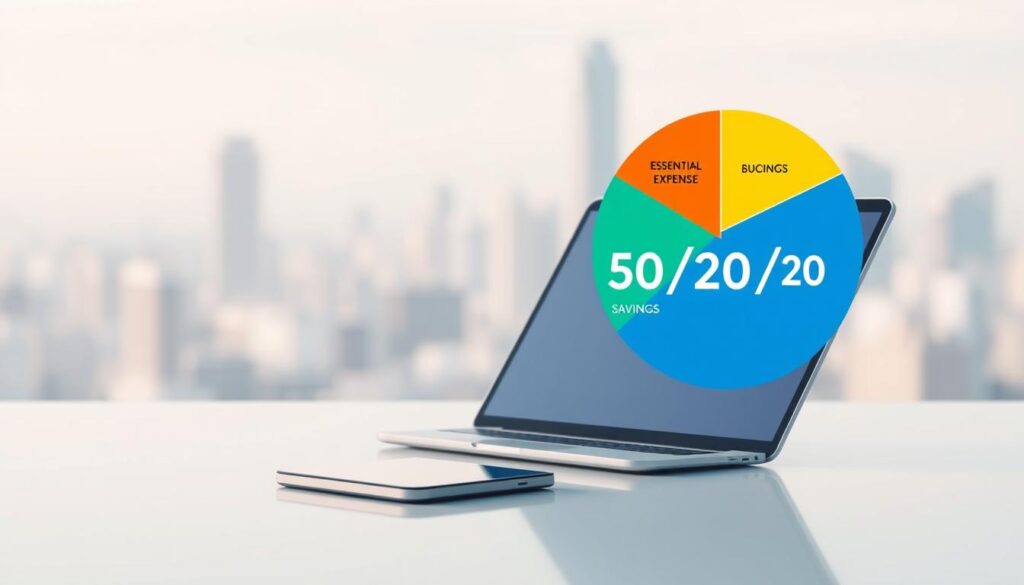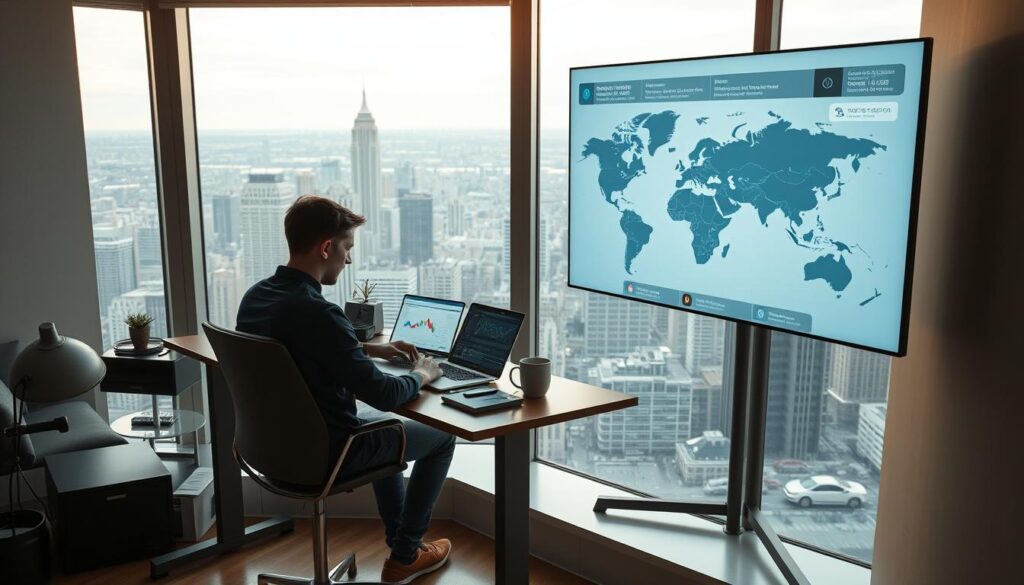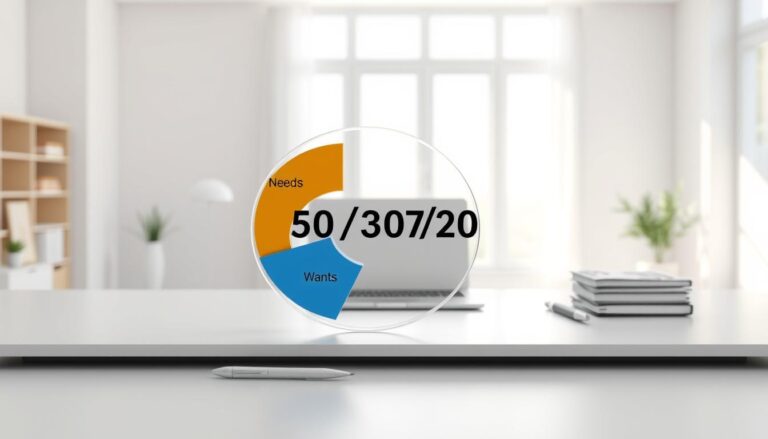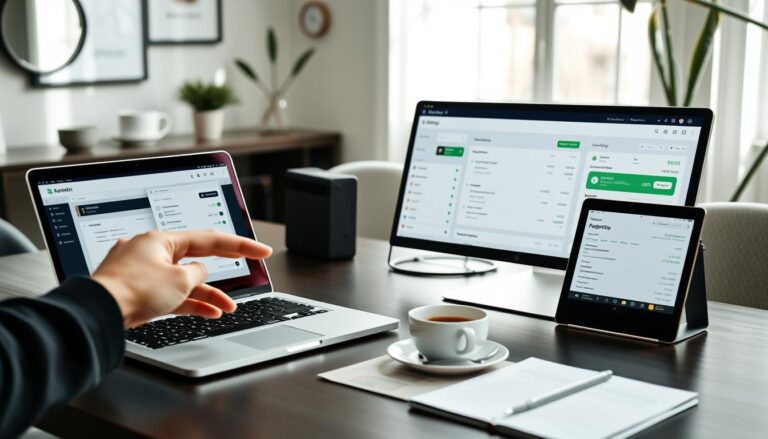Best Budgeting Practices for Digital Nomads
Managing finances as a digital nomad can be challenging due to unpredictable income and varying expenses. Without a solid plan, financial stress can undermine the freedom that this lifestyle offers.
To achieve financial stability, it’s crucial to understand the challenges that come with being a digital nomad. Unpredicted income, accommodation expenses, and different costs of living can make financial planning daunting. Effective financial management is key to maintaining the flexibility and freedom that digital nomads desire.
By introducing budgeting practices, digital nomads can better navigate financial uncertainties and make the most of their lifestyle.
The Financial Landscape of Digital Nomadism
As digital nomads embark on their journeys, understanding the financial landscape is crucial for maintaining a stable lifestyle. To navigate this landscape effectively, it’s essential to categorize expenses into fixed and variable costs. Fixed expenses include predictable costs such as subscriptions, insurance, and student loan payments that remain the same every month.
Variable expenses, on the other hand, change based on location and include costs such as rent, food, transportation, and entertainment. By breaking down expenses into these categories, digital nomads can better estimate their monthly costs and plan accordingly. Researching the cost of living in potential destinations is also crucial for creating a realistic budget.

Understanding the financial landscape also involves being aware of the varying costs associated with different locations. For instance, the cost of living in Southeast Asia can be significantly lower than in Western Europe or North America. By doing thorough research, digital nomads can make informed decisions about where to go and how to manage their finances effectively.
Best Budgeting Practices for Digital Nomads
Effective budgeting is the backbone of a successful digital nomad lifestyle. To navigate the financial complexities of working on the go, adopting a flexible yet structured budgeting practice is essential.
Applying the 50/30/20 Rule
One effective method for digital nomads is the 50/30/20 rule. This simple yet powerful rule suggests allocating50% of your income towards necessary expensessuch as accommodation, food, and transportation.30% towards discretionary spendingallows for enjoying the nomadic lifestyle, whether that’s trying new activities or exploring new destinations. Finally,20% should be dedicated to savings and investments, ensuring financial security and future planning.

By following this rule, digital nomads can achieve a balance between enjoying their current lifestyle and securing their financial future. It’s about making conscious financial decisions that align with personal goals and priorities.
To make the most of the 50/30/20 rule, it’s crucial to track expenses regularly and make adjustments as needed. Digital nomads can use various budgeting apps and tools to simplify this process. By maintaining a flexible budget that adapts to changing circumstances, digital nomads can ensure financial stability regardless of their location.
Ultimately, the key to successful budgeting as a digital nomad is finding a system that works for you and sticking to it. By prioritizing needs, managing discretionary spending, and saving for the future, digital nomads can enjoy their lifestyle with financial peace of mind.
Managing Income and Expenses Across Borders
For digital nomads, navigating the complexities of income and expenses in multiple currencies and tax regimes is a daily reality. Managing income effectively is crucial to maintaining a sustainable lifestyle.
One of the key strategies for digital nomads is diversifying income streams. Relying on a single source of income can be risky, especially when working across different countries with varying economic conditions. By exploring multiple revenue streams, such as freelancing, affiliate marketing, or creating digital content on platforms like TikTok and YouTube, digital nomads can enhance their financial stability.

Joining local job groups and staying updated on new opportunities can also be beneficial. This proactive approach not only opens up new avenues for income but also helps in mitigating the challenges posed by different tax laws and banking systems.
By adopting a diversified income strategy, digital nomads can ensure a more stable financial foundation, allowing them to focus on their work and enjoy their nomadic lifestyle without undue financial stress.
Essential Tools and Apps for Nomadic Financial Management
As a digital nomad, leveraging technology is key to streamlined financial management. Various tools and apps are available that can simplify financial tasks, such as currency conversion, expense tracking, and invoicing.
Platforms like Revolut, Wise, and N26 offer multi-currency accounts and low-cost transfers, making it easier to manage finances across different countries. These financial tools provide the flexibility and security that comes with financial freedom, allowing digital nomads to focus on their work without worrying about their financial management.
By utilizing these tools, digital nomads can simplify their financial management, reduce costs, and enhance their overall financial well-being. Whether it’s converting currencies, tracking expenses, or exploring other income streams, these tools help make the nomadic lifestyle truly sustainable and stress-free.
Effective use of these financial tools can significantly improve a digital nomad’s financial stability, enabling them to enjoy their lifestyle without financial stress.
Healthcare and Insurance Budgeting for Digital Nomads
As digital nomads travel across borders, healthcare budgeting becomes a critical aspect of their financial planning. Given the potential for high medical expenses in some countries, securing appropriate health insurance is essential.
Companies like SafetyWing and World Nomads offer insurance plans tailored to the needs of remote workers, providing coverage for medical emergencies, evacuations, and other health-related expenses. These plans are designed to be flexible and adaptable to the nomadic lifestyle.
When selecting a health insurance plan, digital nomads should consider several factors, including the level of coverage, deductible amounts, and the reputation of the insurance provider. It’s also crucial to understand what is covered and what is not, to avoid unexpected medical bills.
By carefully evaluating these options and budgeting accordingly, digital nomads can ensure they are adequately protected against healthcare costs. This not only provides financial security but also peace of mind, allowing them to focus on their work and enjoy their travels.
Conclusion
As a digital nomad, achieving financial stability requires a combination of smart money management, consistent saving, and informed financial decisions. By adopting best budgeting practices, you can navigate the challenges of your lifestyle more effectively.
There’s no single “right” way to manage your finances as a digital nomad – only the approach that works best for you. By understanding the financial landscape, creating a flexible budget, and leveraging essential tools and apps, you can make the most of your income and expenses across borders.
Ultimately, digital nomads who prioritize financial planning and budgeting can enjoy a more sustainable lifestyle, free from financial stress. By making wise spending choices and exploring investments that can grow your wealth over time, you can achieve the financial freedom you desire.







